The birthplace of the US vacation
The birthplace of the US vacation
(Image credit: lightphoto/Getty Images)
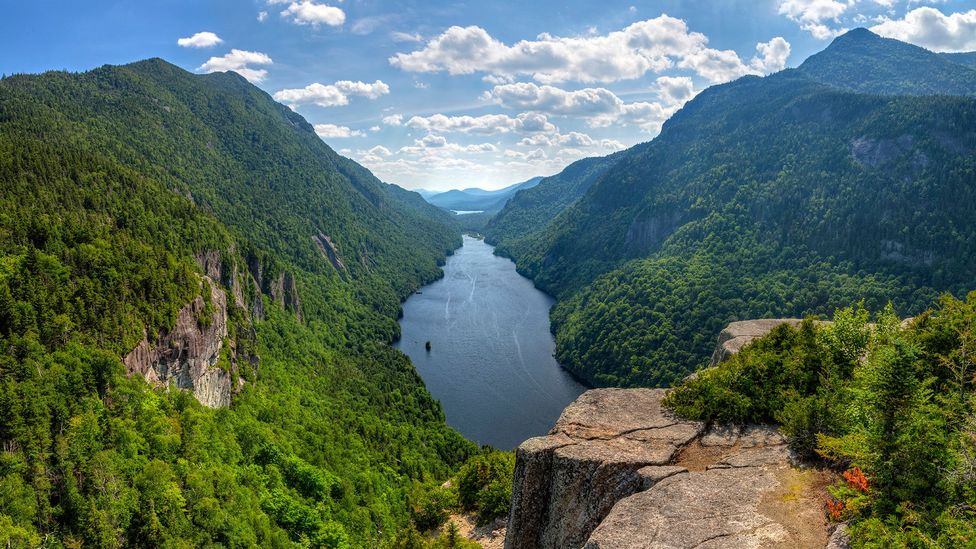
Roughly 150 years ago, a priest led Americans to “vacate” cities and enjoy nature in the Adirondacks. Now, a brand-new trail connecting the US and Canada is hoping to do the same
A
A red-tailed hawk dived into the underbrush lining the guardrail. Then, a blue jay flitted across the road, missing my car’s windshield by a feather. There were no signs pointing the way to gas stations and fast-food drive-thrus. Towering trees blocked out most vestiges of civilisation. I was not yet off a major interstate, but I had already entered the Adirondack Park. I felt a hint of the wild that had drawn me from New York City, 200 miles away, that morning.
Lying entirely within the state of New York, the Adirondack Mountains are still largely mysterious to most, even those within easy driving distance like me. The Adirondack Park covers a staggering 6.1 million acres of land – making it bigger than Yellowstone, Yosemite, Grand Canyon, Glacier and the Great Smoky Mountain national parks combined – and is the largest publicly protected area in the contiguous United States. But with no park fees, closing hours or entrance gates, it’s easy to meander in and out of the US’ largest National Historic Landmark and one of its oldest protected forests without ever knowing you’d entered in the first place.

The Adirondacks are bigger than Yellowstone, Grand Canyon, Glacier and the Great Smoky Mountain national parks combined (Credit: lightphoto/Getty Images)
I was following the footsteps of countless city-dwelling travellers before me, looking for fresh air, adventure and a break from the noise. Of those travellers, I was most interested in one: William Henry Harrison Murray, a charismatic clergyman from Boston who, 152 years ago, published the first how-to guide to camping in the Adirondacks – and set off a mad rush of city folk heading into these mountains to escape the pestilence and pollution of the big city.
Filled with tales of his own travels, as well as practical information on what to wear, when to go and how to get there, Murray’s Adventures in the Wilderness; or, Camp-Life in the Adirondacks was a sensation when it was released in 1869. As city folk “vacated” their New York apartments and fled to the Adirondacks in the thousands, Murray’s guidebook in hand, journalists labelled it the “Murray Rush”. That term may not have stuck around, but another one became increasingly common after that summer’s mass migration into nature: “vacation“.
“The practical advice made this book something that was a useful tool for people who maybe otherwise wouldn’t have been likely to take a vacation at all,” said Ivy Gocker, library director of the Adirondack Experience, a museum in the hamlet of Blue Mountain Lake. She summed up Murray’s argument: “If you’re someone who is slogging through a workday in the city, your life will improve if you give yourself time in the outdoors.”
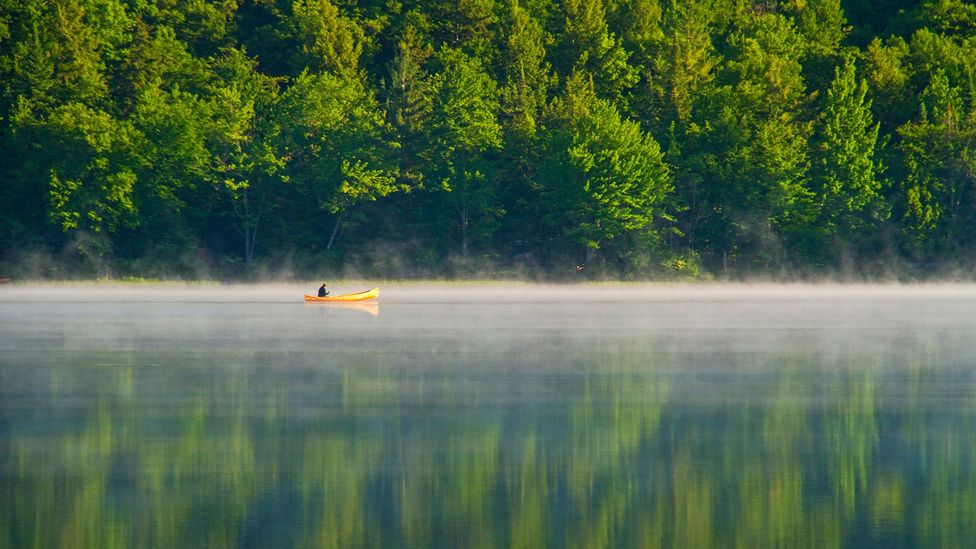
Murray’s vivid descriptions of the Adirondacks drew Americans to venture into its wilderness (Credit: Matt Champlin/Getty Images)
It was a novel concept. Of course, people had visited and lived in even the most impenetrable sections of the Adirondacks for a long time. For starters, at least half a dozen different Indigenous groups have called the region home for millennia. In the centuries leading up to the publication of Murray’s outdoor opus, the Adirondacks became a destination for “sportsmen”, as Murray called the fishermen, hunters and trappers who made a living during long stints in the wild. The difference was that Murray was saying that anyone could do this, including – gasp! – women. To this day, Murray is still known as the father of the US’ outdoor movement.
“Murray was very intentionally setting out to democratise access to the Adirondacks,” Gocker said. “He explicitly said ‘women should come up here too and these are the clothes they should pack.'”
You may also be interested in:
• A new way to travel across the US
• The plan to connect every British town
• A new hiking trail uniting Italy
Still, if the summer of 1869 saw the birth of the American vacation, it was a turbulent birth. Lured by Murray’s evocative prose but not fully prepared for heavy rain, blood-sucking black flies and overbooked inns, many people came back disappointed. Critics labelled them “Murray’s Fools”.
But the Boston priest doubled down, insisting that the naysayers were just trying to keep all the beauty for themselves. Tourism in the Adirondacks continued to grow. There were many factors pushing city slickers into the wilderness, but chief among them was health. In his book, Murray wrote of a young man miraculously cured of tuberculosis consumption after time spent in the Adirondacks, countering the prevailing wisdom that time outside would lead to a cold.
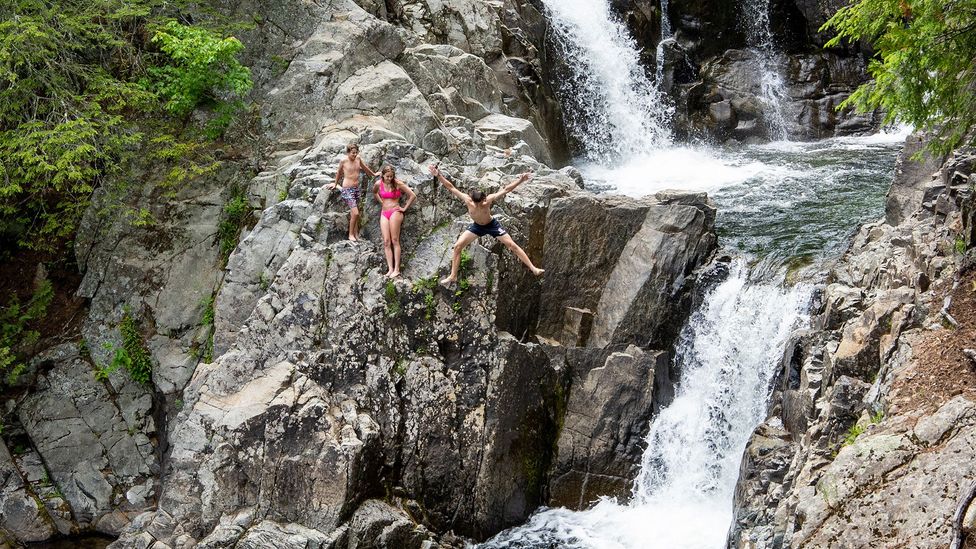
Murray believed that spending time in the Adirondacks was beneficial for people’s health (Credit: Sebastian Modak)
“I believe that, all things being considered, no portion of our country surpasses, if indeed any equals, in health-giving qualities, the Adirondack Wilderness,” he wrote in his guide. To anyone who over the course of a global pandemic has felt the urge to escape the city for somewhere where the air was clearer, this might all sound familiar.
As I left my car in the town of Westport on the shores of Lake Champlain, I felt a sense of anticipation, of venturing into the challenging and the unknown, that many of Murray’s Fools might have felt. In his book, Murray bragged that the trip into the Adirondacks – a combination of travel by rail, steamboat and carriage – was an “easy and quick” 33 hours from Boston or New York City. Once in the mountains, he recommended travelling by boat down a dense network of rivers, shooting loons for sport and fishing for trout along the way. Part of the appeal of the Adirondacks in the 19th Century was the accessibility afforded by rail lines and steamboat routes. In the spirit of that original rush, I had come looking for an even newer way through the park.
Completed in December 2020, the Empire State Trail is a 750-mile bicycle route that extends from the southern tip of Manhattan north to the Canadian border and, via a perpendicular arm, between Buffalo and Albany – making it the longest multi-use state trail in the US. After passing through the Hudson Valley and the Catskills, often in the form of designated, car-free trails, it skirts the eastern edge of Adirondack Park, becoming a slender shoulder of a rolling parkway.
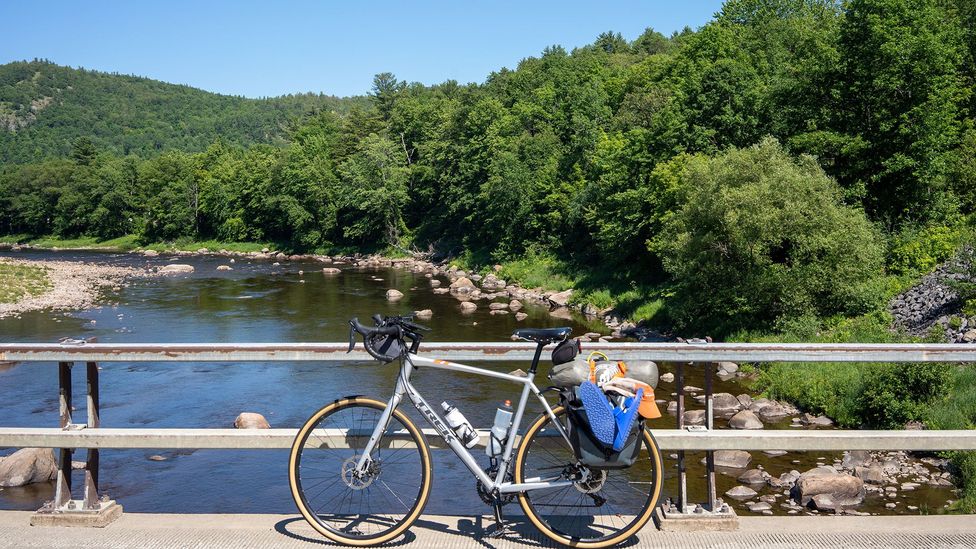
The Empire State Trail is the longest multi-use state trail in the US (Credit: Sebastian Modak)
Murray emphasised the importance of a guide in the Adirondacks: “A good guide, like a good wife, is indispensable to one’s success, pleasure, and peace,” he wrote in one of the many eye-rollingly 19th-Century turns of phrase in his book. I had planned to ride into the Adirondacks for a night of camping alone – it’s a little easier to navigate road than river without a guide – but I did call on the expertise of a local. Doug Haney, owner and founder of BikeADK, a company in the town of Saranac Lake that organises bike tours and events in the region, took one look at my proposed route and made it better.
Just like Murray’s book did some 150 years ago, Haney hopes that the new Empire State Trail will lure more visitors to the region, but he pointed out that it’s not the best riding in the area.
“I think you’re a perfect example of what I think will happen in the Adirondacks,” he said, when we caught up on the phone after my journey. “People might build a ride around that north-to-south corridor of the Empire State Trail but may find that they want to jump off of it for a bit and really experience something that’s special, something you don’t get by going in a straight line.”
And those people are coming in unprecedented numbers. “With the pandemic, it was expected to be a down year, but it was the exact opposite,” Haney said. While BikeADK had to cancel public cycling events, the company pivoted to organising more private tours. It was precisely what people were looking for, including a whole host of new cyclists.
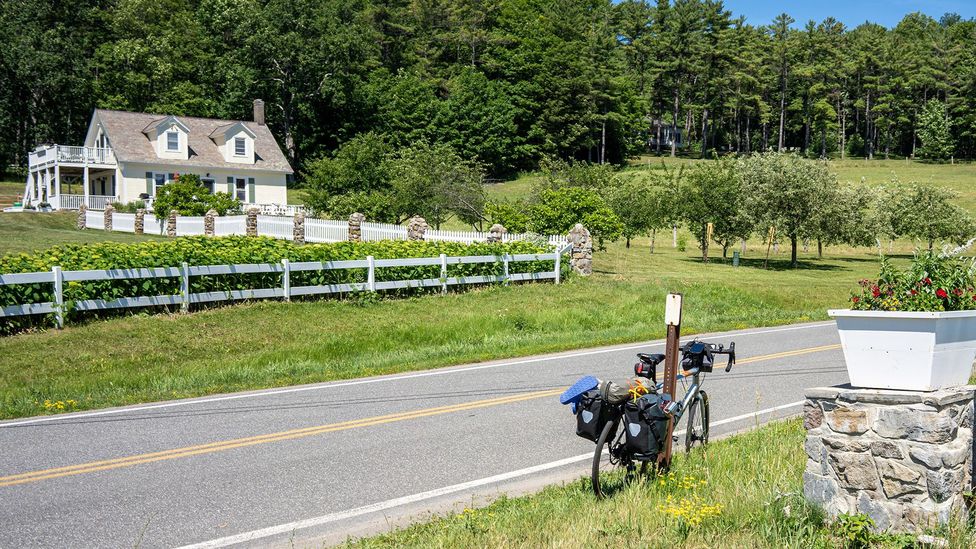
Some of the most scenic stretches along the Empire State Trail are the backroads found just off the trail (Credit: Sebastian Modak)
“The cool thing has been that a lot of the people asking for our help are people that normally wouldn’t do a cycling trip; they aren’t your typical bicycling tourist,” Haney said. “I think the idea of being on your bike and being out and pedalling in a wilderness environment has been appealing to people trying to get away from the pandemic.”
Veering away from the straight line, my route snaked and dipped, curled and climbed. The northerly sections of the Empire State Trail, while beautiful, were the least fun stretches of my ride, preoccupied as I was by passing cars and trucks. On the best stretches, backroads that led me away from the sections of Route 22 designated part of the trail, I didn’t see a person for 30 minutes at a time.
After turning away from the lake and towards the mountains at Ausable Chasm, the “Grand Canyon of the Adirondacks”, the scenery alternated between the pastoral and the wild; roadside companions switched between nonplussed cows and hyper-alert deer. It smelled like a barnyard on one curve, and pine needles the next. Towns appeared and, a mile later, disappeared. Gruelling climbs were rewarded with views of emerald-green valleys and mountain slopes so dense with tree coverage they looked like giant heads of broccoli. When the road was straight, I could see it for miles as it dipped and then took off like a ramp into eternity. “What sports have we in house and city like those which the children of wood and stream enjoy?” Murray wrote. What sports, indeed.
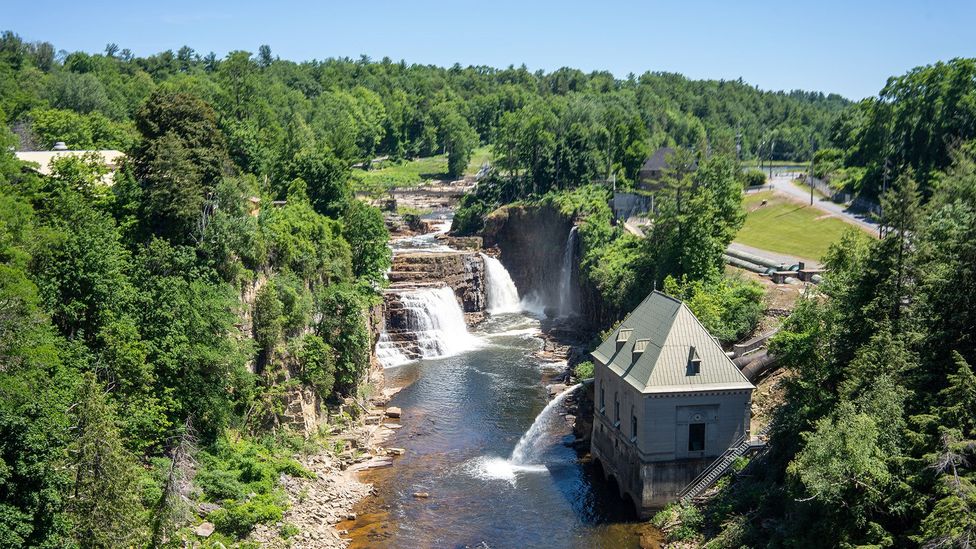
Ausable Chasm is known as the “Grand Canyon of the Adirondacks” (Credit: Sebastian Modak)
Bike travel is throwback travel. It slows the world down and allows you to drink it in, in a way that cars and planes don’t. Strangers wave when you pass. If you stop long enough to chat, they will notice the pannier bags hanging off the back of your bicycle and the tent strapped to its rack. They’ll ask where you’re headed.
They’ll give you warnings about the weather or tips about butcher shops, water pumps and farm stands along the way. They tell you about how things have changed over the past year (“busiest year I’ve seen”, “you should see the weekend crowds in Lake Placid”). They point the way to swimming holes and waterfalls where, dripping in sweat after pedalling across a mountain pass, you can dip your head in cold, clear water and feel reborn.
My legs ached and my lungs burned as I rolled into a campsite in the shadow of Whiteface Mountain at the end of my first day, 70 miles from where I started. After setting up my tent and peeling myself out of sweat-soaked clothes, there was nothing to do but watch the light fade. Tomorrow, there were many more miles to go.
Slowcomotion is a BBC Travel series that celebrates slow, self-propelled travel and invites readers to get outside and reconnect with the world in a safe and sustainable way.
—
Join more than three million BBC Travel fans by liking us on Facebook, or follow us on Twitter and Instagram.
If you liked this story, sign up for the weekly bbc.com features newsletter called “The Essential List”. A handpicked selection of stories from BBC Future, Culture, Worklife and Travel, delivered to your inbox every Friday.
